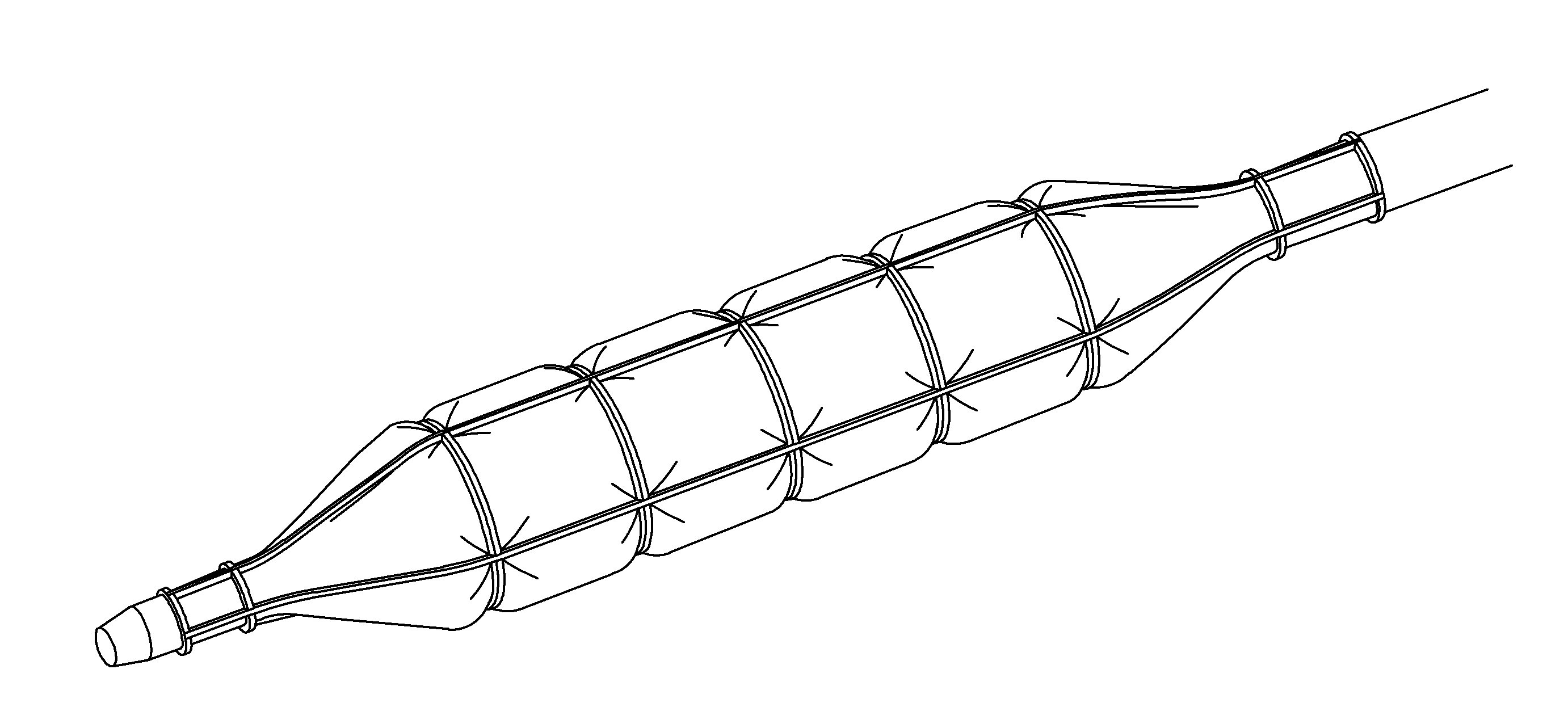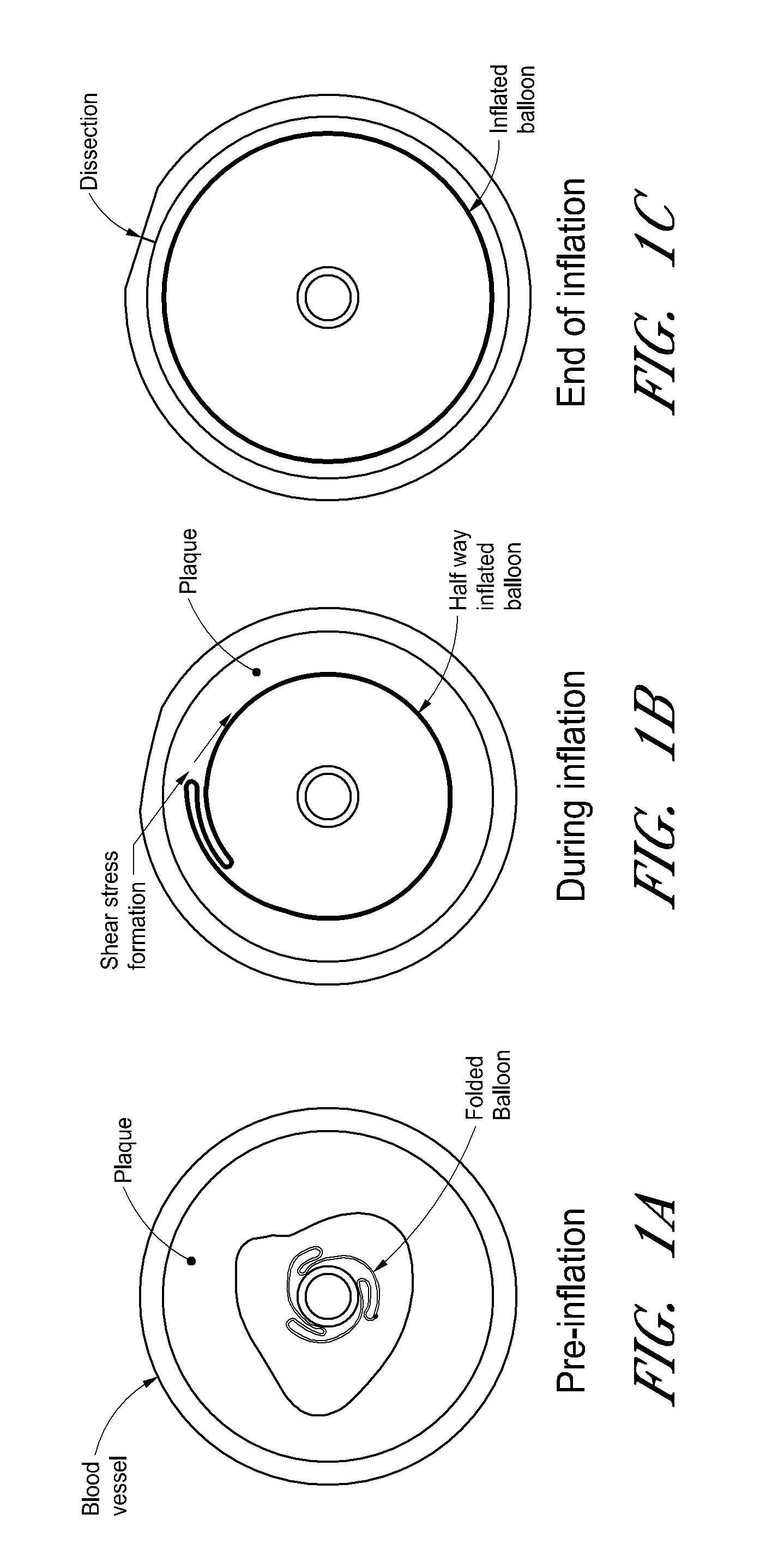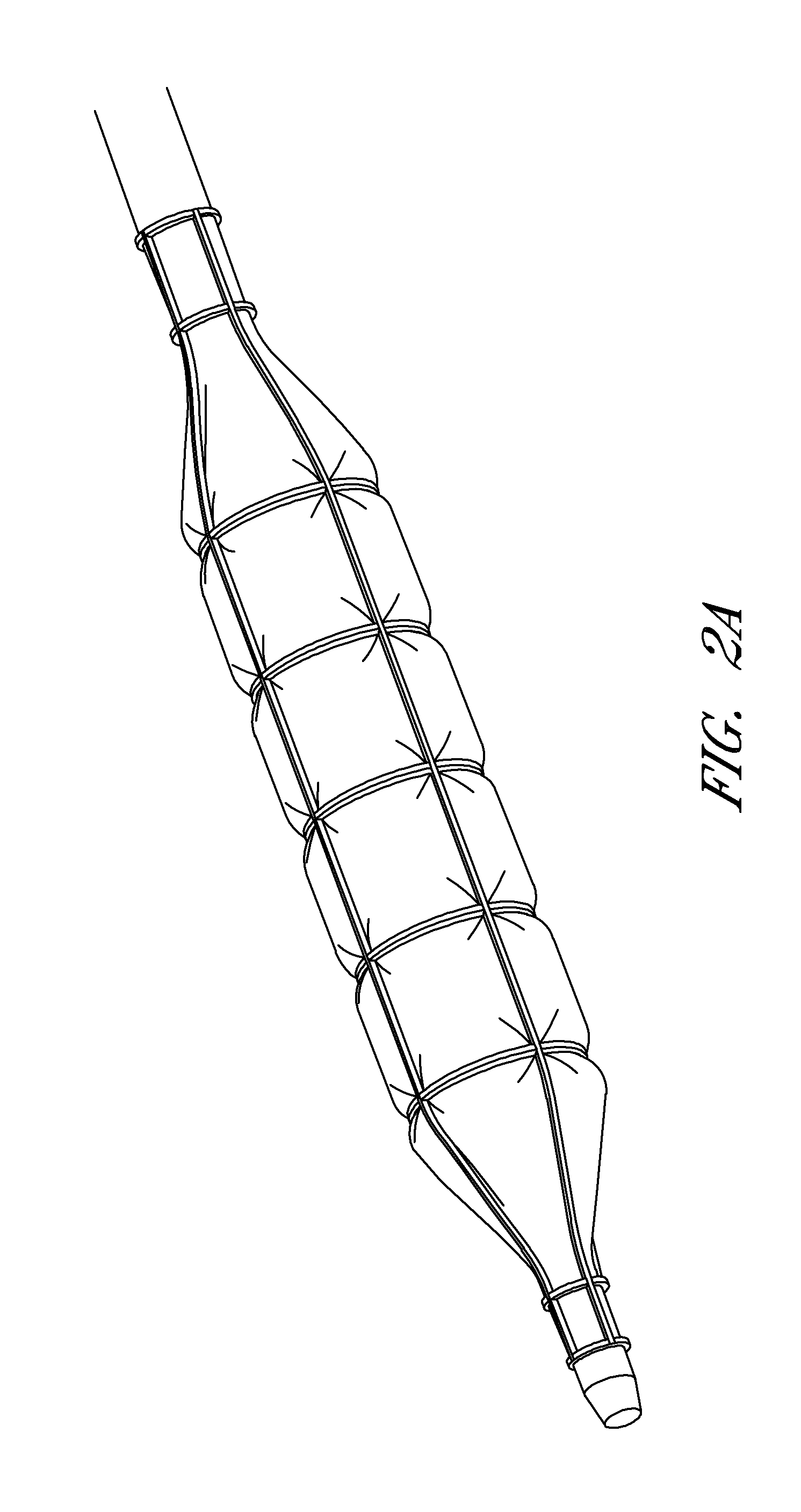Device for compartmental dilatation of blood vessels
a technology of compartmental dilatation and blood vessel, which is applied in the field of medical methods and devices, can solve the problems of limited cs expansion, severe trauma, fast and aggressive, etc., and achieve the effects of promoting plaque remodeling, promoting faster healing of diseased areas, and less trauma
- Summary
- Abstract
- Description
- Claims
- Application Information
AI Technical Summary
Benefits of technology
Problems solved by technology
Method used
Image
Examples
Embodiment Construction
[0022]This invention discusses a device for treating of diseased, blocked, occluded or stenotic lumens in the body, typically blood vessels including both arteries and veins, and more typically coronary and peripheral arteries. This device dilates occluded vessels while causing minimal trauma to the lesion thus minimizing the risk of dissections, total occlusion, abrupt closure and restenosis, and promotes faster healing.
[0023]A Constraining Structure (CS) is placed over a balloon catheter where upon inflation both the balloon and the CS increase in diameter and during deflation the CS returns to its original dimensions. The CS can have multiple designs intended to expand to a diameter smaller than the maximal inflated diameter of the balloon. The CS can be connected to the balloon either on the distal side or the proximal side or both. It can also float over the balloon without firm attachment using simple covers since the CS can be designed to maintain its length during expansion ...
PUM
 Login to View More
Login to View More Abstract
Description
Claims
Application Information
 Login to View More
Login to View More - R&D
- Intellectual Property
- Life Sciences
- Materials
- Tech Scout
- Unparalleled Data Quality
- Higher Quality Content
- 60% Fewer Hallucinations
Browse by: Latest US Patents, China's latest patents, Technical Efficacy Thesaurus, Application Domain, Technology Topic, Popular Technical Reports.
© 2025 PatSnap. All rights reserved.Legal|Privacy policy|Modern Slavery Act Transparency Statement|Sitemap|About US| Contact US: help@patsnap.com



